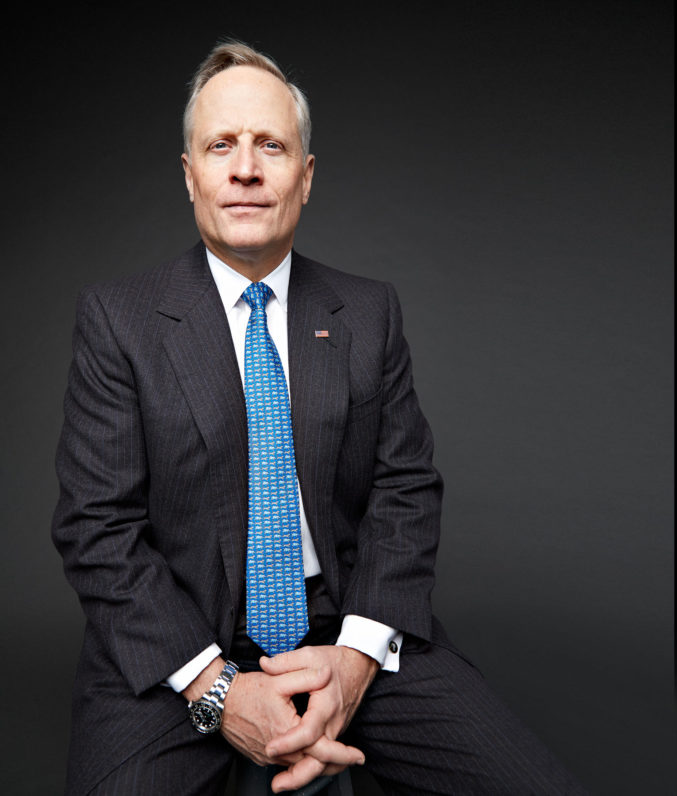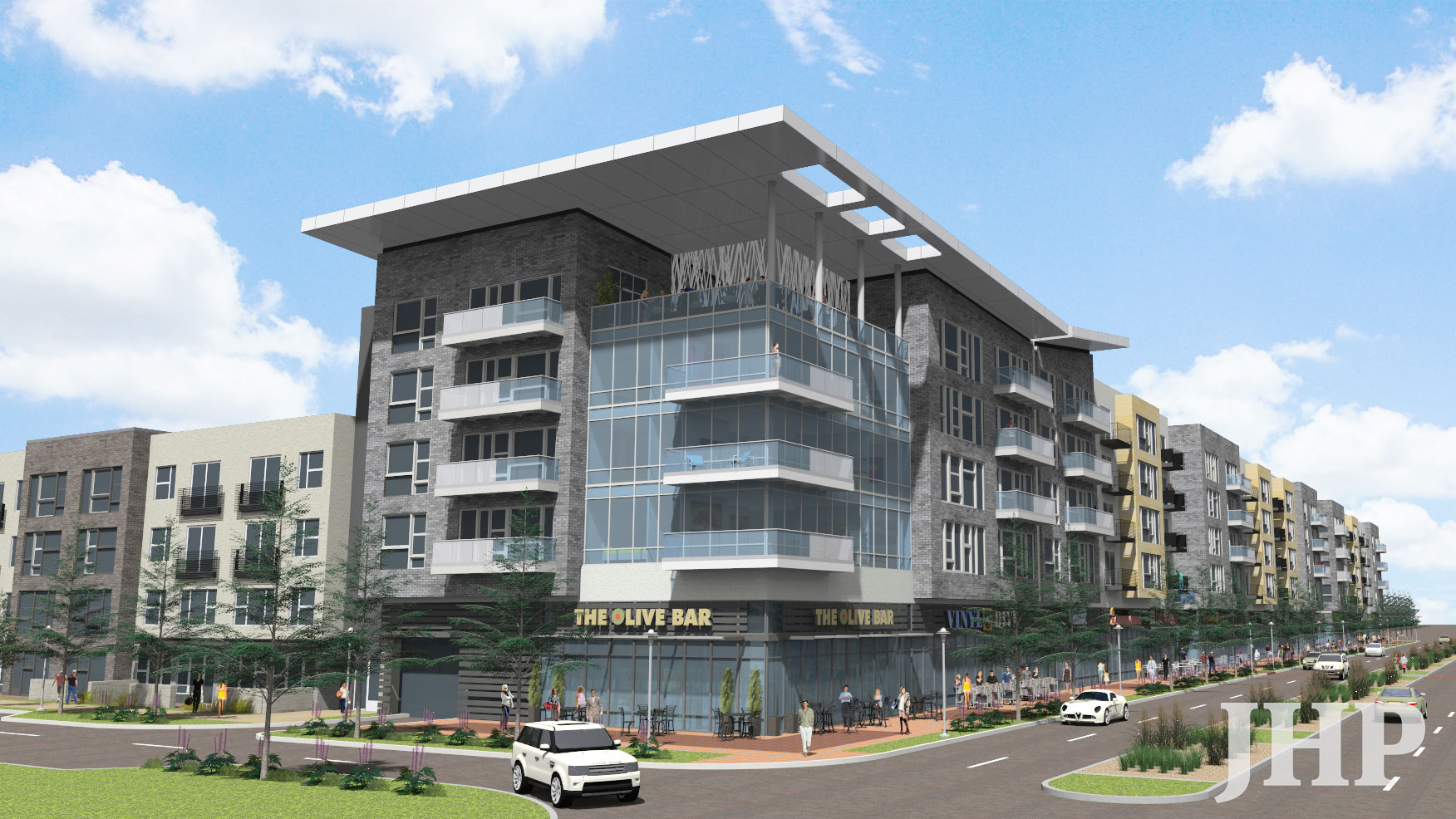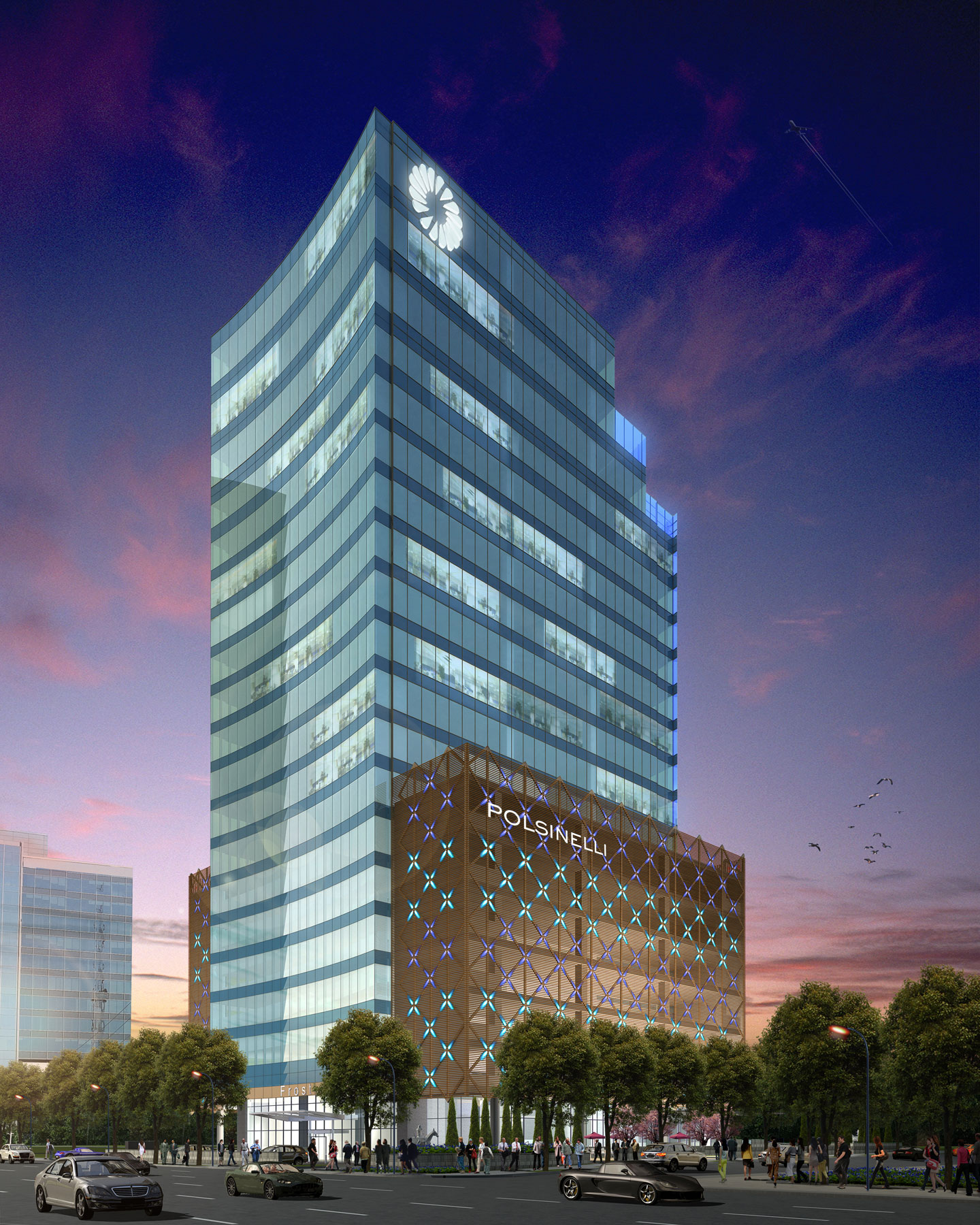9. Dallas Farmer’s Market Goes Private.
There had been rumblings about a private takeover of the Farmers Market for decades. Last year, the talk became reality when DF Market Holdings, led by Brian Bergersen of Spectrum Properties, acquired the complex from the City of Dallas—and kicked off a $65 million transformation (supported, in part, by an expanded Tax Increment Finance district).
The Shed reopened Labor Day weekend and now operates seven days a week. The former administration building was acquired by the North Texas Food Bank, which will move its headquarters there this spring. But it’s the velocity of the leases for The Market (formerly Shed 2) that really stands out.
“We are 90 percent leased before even starting construction,” says Jack Gosnell of UCR Urban, who’s overseeing marketing of the space, along with colleague Sasha Levine. “I think it has caught everyone’s imagination. People are hearing about it and wanting to be part of something new.”
The Market will house about 30 restaurants and shops in all. The latest tenants to sign on include Rex’s Seafood and Market, Stocks & Bondy, Palmieri Cafe, a Firebird Restaurant Group eatery, and Mudhen, a concept from Shannon Wynne, the restaurateur behind Meddlesome Moth, Flying Fish, and Lark on the Park.
Up next: More retail, parking, green space, and a 240-unit apartment complex. When the renovation is complete, the Dallas Farmers Market will become the “fourth leg on the table,” says Gosnell, joining the Arts District, West End/Victory Park, and the South Side/Cedars area. “It’s going to make another vibrant corner of downtown Dallas, all of which will be activated by the infill of residential in the middle,” he says.
10. AllianceTexas’ $50B Impact.

Alliance Airport broke ground in December 1989. Twenty-five years later, it has evolved into AllianceTexas, an 18,000-acre development that sprawls from Fort Worth into Haslet, Roanoke, and Westlake. Through 2013, it has generated a local economic impact of $50.6 billion.
“It’s far bigger than what we thought it would be, and far more complex,” Perot says.
That’s an understatement. Under the leadership of Perot and Berry, who serves as president of Hillwood Properties, AllianceTexas has become one of the most successful developments in the world. Along with numerous residential communities, the project holds 37 million square feet of commercial space occupied by about 400 companies—including biggies like Amazon, Mercedes-Benz, FedEx, and Deloitte.
And Perot and Berry aren’t done yet. Only about half of AllianceTexas has been developed so far, and expansions are underway on the office, industrial, retail, and residential fronts. “That’s what’s fun about being a developer,” Perot says. “You get to build cities.”
11. Redevelopment in the Core.
There was a time when real estate investors wouldn’t take calls from the 214 area code. Now, those same buyers and lenders have moved Dallas up toward the top of their prospecting lists. Most notable are the bets that both outside and local investors are placing on the urban core, where multimillion-dollar redevelopment projects are setting the stage for a major transformation.
Activity is focused on the city’s center—the area between Pacific Avenue and Main, Commerce, and Elm streets. A number of factors are at play: a growing downtown residential base, the popularity of new destinations like Klyde Warren Park and the Perot Museum, the proven success of Headington Cos.’ redevelopment of The Joule hotel and its ongoing retail work along Main Street, bargain sales prices for vacant or troubled office buildings, investor eagerness to deploy capital, and the highly sought-after millennial workforce, which prefers an urban live-work-play environment.
Major renovations are in the works at, among other buildings, 1401 Elm, 1600 Pacific, 1700 Pacific, 211 N. Ervay, Bank of America Plaza, KPMG Centre, One Dallas Center, One Main Place, the Statler Hilton, and Thanksgiving Tower.
Many would not be happening without city support, says John Crawford, president and CEO of Downtown Dallas Inc. “The city is putting in a lot of money to support the revitalization of downtown—$50 million to 1401 Elm, $44 million into the Statler Hotel project, and $12.5 million for 1600 Pacific. This isn’t chump change. But at the end of the day, it’s going to grow the tax base.”
12. Trinity Groves Takes Off.

Thanks to West Dallas Investments, the bridge to nowhere now goes somewhere: Trinity Groves. Its eateries and restaurant incubator have lured thousands over the river to West Dallas—likely a virgin journey for many.
The success of Trinity Groves has also attracted new partners: industry icons Robert Shaw and Roger Staubach. The two former Dallas Cowboys players are teaming with the Trinity Groves owners to develop 1,000 new apartments. Construction will get underway in March of 2015, with the first units ready for occupancy in early 2016.
Shaw, who’s known for pioneering urban-style projects in Uptown and the suburbs, says he is “extraordinarily optimistic” about the endeavor in Trinity Groves.
“It’s going to be transformative,” he says. “Not just in the physical existence of a new midrise building, but adding people—people who are out walking their dogs and moving about in the morning and late at night. That is the magic, when all of the pieces are in place. That’s when something comes to life.”
13. 7-Eleven’s Headquarters Move.
In March, D Real Estate Daily broke the news that 7-Eleven Inc. planned to move its headquarters to the suburbs. The deal came out of nowhere. After all, the convenience store operator had been based in Dallas since the late 1920s and still had plenty of term left on its lease at One Arts Plaza. But 7-Eleven was outgrowing that space. It also yearned to be closer to its suburban workforce.
Landlord Lucy Billingsley came up with a solution: she’d build the company its own building at Cypress Waters. It would be another boost for her 1,000-acre project surrounding North Lake, which had already won headquarters for Nationstar Mortgage, Meritage Homes, and Cheddar’s Casual Café. And it would free up a big chunk of space at One Arts—whose value had significantly increased since 7-Eleven inked its lease in 2005. It also would give Billingsley a chance to replace 7-Eleven with a tenant that would be a better complement to law firm Thompson & Knight, which occupies about 180,000 square feet in the Arts District property.
And that’s exactly how it played out. In November, EnLink Midstream Partners leased the bulk of 7-Eleven’s One Arts space. It will move from Uptown and take occupancy after 7-Eleven moves out in 2016. So everybody’s happy: 7-Eleven, Thompson & Knight, EnLink, and, most of all, Billingsley. That’s how she rolls.
14. Pier 1 Gets Its Tower (and its Mojo) Back.
The Great Recession led to the death of a number of big national retail chains, and make no mistake, Fort Worth-based Pier 1 Imports was on the brink. At one point, the company posted 17 consecutive quarters of declining same-store sales. In 2008, it sold its prized Fort Worth headquarters to Chesapeake Energy for $104 million. Pier 1 freed up 10 floors of the 20-story building for Chesapeake, which rebranded the office tower as its own.
By 2014, though, fortunes had changed. Chesapeake had drastically reduced its Barnett Shale operations and Pier 1 had rebounded in a big way. The company wanted to stay in its existing building, says Todd Burnette, managing director of JLL in Fort Worth. But it wanted a new landlord—an institutional-grade firm that owned and operated other buildings.
A white knight arrived in the form of Houston-based Hines. “They’re the gold standard,” Burnette says. “They’re known around the country and around the world and know how a Class A asset should be run.”
It took an agonizing nine months, but the sale of the 409,997-square-foot tower on the banks of the Trinity River finally closed in August. Pier 1 negotiated an expanded lease with its new landlord—and got its naming rights back. “Within a couple of years, Pier 1 will occupy the entire building,” Burnette says. “The company is set for growth now and for future expansion down the road.”
15. Dallas Gets an Honest-to-God Real Estate Institute.

Dallas has a long and storied real estate history. It’s also one of the most dynamic markets in the country. But one thing was missing: a world-class real estate intitute. In the spring of 2013, Southern Methodist University’s Cox School of Business announced plans to create just that. Joseph Cahoon took over as director of SMU’s Robert and Margaret Folsom Institute for Real Estate this past January. The former managing director of the University of Texas’ Real Estate Investment and Finance Center also has extensive industry experience.
“I saw low-hanging fruit,” Cahoon says. “A university on a huge upward trajectory academically, sitting in the middle of the real estate universe, with an alumni base that’s as deep in the industry as any school you could think of.”
Cahoon wants the institute to be an asset not just for SMU, but for the region and the nation. Initially, he’s focusing on creating national networks for alumni and leveraging the abundant expertise in DFW by bringing leaders into the classroom and getting students out into the real world.
When Cahoon put together the institute’s board, he was impressed that nearly 70 local leaders stepped up to participate.
“We are in the first inning of invigorating this program, but it has gone so much faster and better than I would have ever imagined,” he says. “There has been a lot of pent-up demand.”






